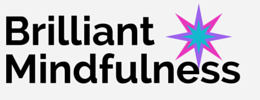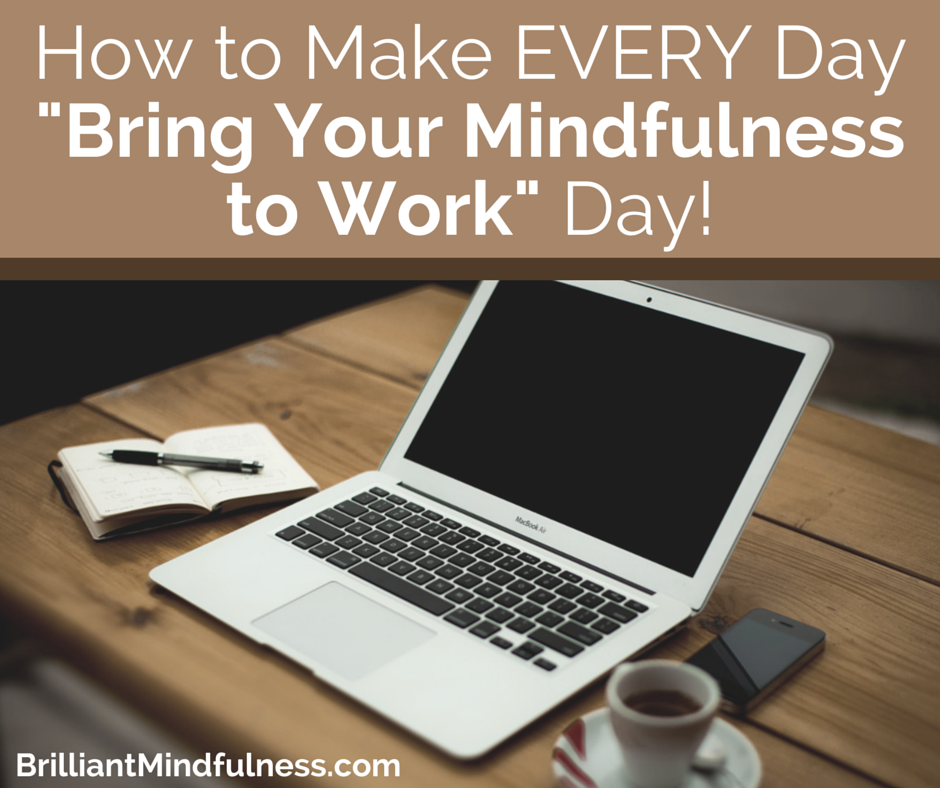Scenario: You’re sitting in your Monday morning meeting, but your thoughts begin to drift into the past (perhaps to the movie you saw with your kids over the weekend) or into the future (perhaps to the next meeting on your agenda). Suddenly you realize you’re not actually present in the meeting.
Sound familiar?
We spend a good portion of our time reliving the past and pre-living the future. And while reminiscing and planning are important human activities, they often get in the way of our productivity. How much more effective would we be at work if we were fully present?
Mindfulness — nonjudgmental awareness of the present moment– is a powerful tool for training our attention. Through mindfulness, we learn to filter out distractions and concentrate on our current task. (You can learn more about mindfulness, and how to start your own personal practice, in our free e-book, available here.)
In short, mindfulness is both a practice (e.g., sitting in meditation each morning) AND a way of being in the world (e.g., bringing your full attention to that morning meeting). The power of mindfulness is that our time spent in formal practice begins to transform how we relate to and engage in our own life.
And that means we can make EVERY day “Bring Your Mindfulness to Work Day!”
How? Read on for five simple ways you can bring mindfulness to work with you:
1. Mindful Commuting
For a portion of your morning commute, turn off the radio and just pay attention to the sights and sounds around you. Resist the urge to check your email at red lights. Renowned teacher Thich Nhat Hanh suggests we see red lights as invitations to mindfulness, rather than as irritations or impediments. Let the red light be a reminder to spend a moment with your attention focused on the breath — just three deep breaths on your morning commute can help you start the day relaxed, present, and aware.
2. Know Your WHY
In Simon Sinek’s Start With Why, he tells the story of two stonemasons — one them, when asked, “Do you like your job?”, describes the monotony and difficulty of the work, and the frustration of laboring day after day on a project he may never see completed in his lifetime. The other stonemason, when asked the same question, says, “I love my job. I’m building a cathedral.”
Get clear on your why. Infusing your work with meaning and purpose allows you to work with intention and authenticity. It’s what makes the difference between laying bricks and building a cathedral.
3. The Power of a Mindful Pause
At least twice during your workday, take a mindful pause. Turn away from your computer and devices, close your eyes, and for 1-2 minutes, focus your attention on your breathing. Where do you notice the sensations of the breath most vividly — in the nose, the chest, or the abdomen? What thoughts and emotions are present? What body sensations are present? Can you find places where you are holding tension, and bring a softening to those areas?
This simple check-in practice can help you become aware of thoughts and emotions before they overwhelm you. It helps you train your attention and defuse any stress that may have been building up during the day.
4. Mindful Lunch Break
How often do you work through lunch? We may think we’re more productive when we work on a project for hours on end, but we generally need mental breaks after 45-60 minutes of intense cognitive focus. Make your lunch break a true break — get outside and go for a short walk, have a non-shop-talk conversation with colleagues, or simply enjoy some quiet. It’s often in those mental breaks that insights and creative solutions come to us.
5. Mindful Listening
Listening involves a lot more than simply hearing. When someone is speaking to you, are you paying attention to their words, or are you formulating your response? Are you attempting to understand their perspective, or have you already made an assumption about what they think and how their sentences are going to end?
With mindfulness, we practice listening to another person and sincerely trying to understand their words. We allow time for pauses in conversations (as musicians would say, we “play the rest,”) so that we can respond authentically and thoughtfully. Imagine how much more effective our meetings could be if everyone was present and listening to others without judgment!
*****
When we practice mindfulness, we bring our nonjudgmental awareness to our actions throughout the day.
With mindfulness, we can infuse our workday with purpose, passion, and productivity. Tweet
Every day.
Interested in bringing mindfulness training to your workplace? Contact us for information about our programs for businesses.
You may also be interested in the following articles:
“Mindfulness Helps You Become a Better Leader” from the Harvard Business Review
“Mindfulness in the Age of Complexity” from the Harvard Business Review
“Mindfulness, Work, and You!” from Mindful Magazine
“morning meeting” photo credit: The Real Work Experience: Professionals via photopin (license)
Brilliant News!
Our first e-course will be available soon: Brilliant Mindful YOU! Mindfulness for Beginners. Click the image below (or click here) to join the waitlist for the course and be notified as soon as registration opens. More details about the course will be shared in the upcoming weeks! In the meantime, you can learn more here — plus watch a brief video lesson from Sarah Rudell Beach about taking a mindful pause.
This post contains affiliate links.



